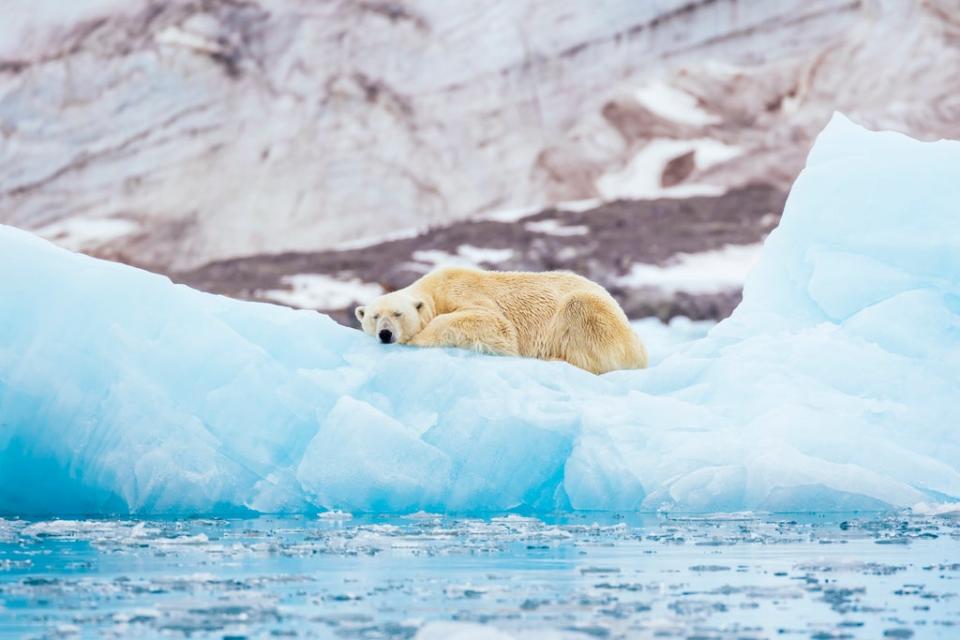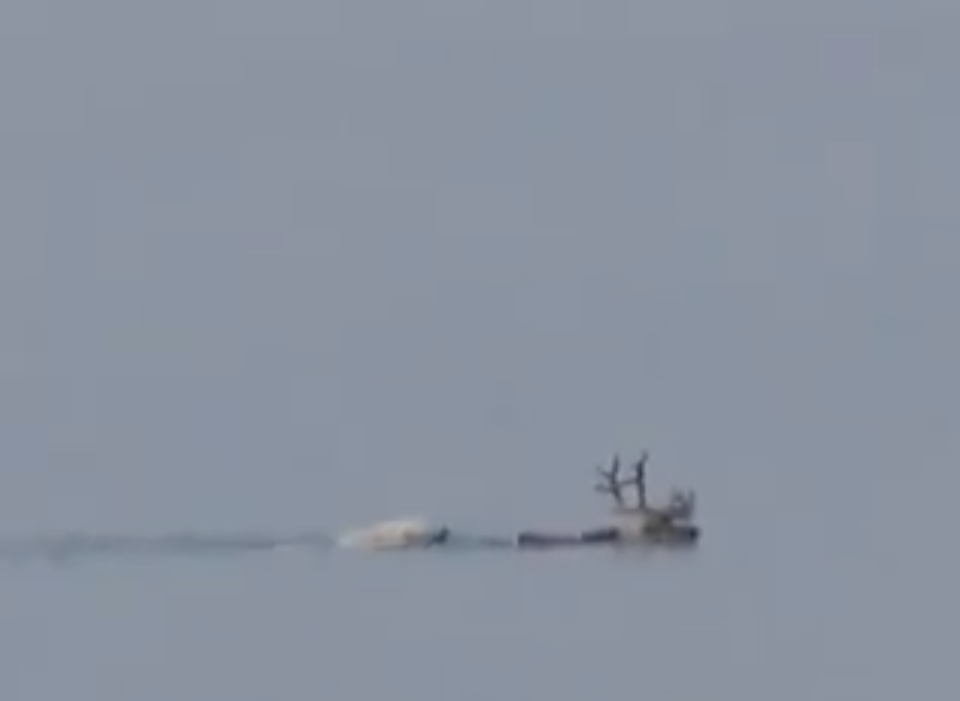How the climate crisis is forcing polar bears into deadly encounters with humans

The climate crisis is not only taking a devastating toll on humanity with a carousel of increasingly extreme events, but on the planet’s biodiversity as a whole.
Among those facing immediate peril are polar bears. As Arctic dwellers, they are in a region that is heating at four times the rate of the rest of the world, as reported by NASA scientist Peter Jacobs.
Rising ocean temperatures are melting sea ice and reducing their hunting grounds. Somewhere between 21,000-30,000 polar bears are now left in the wild, but estimating whether there is a decline in adult population numbers is tricky due to a lack of long-term data.
However, recent aerial counts of polar bear cubs between the ages of one and two-years-old have shown a dramatic decrease in bears reaching adulthood since the 1990s. Those cubs, called “yearlings”, used to account for 12 per cent of the polar bear population. Now they only account for just three percent.
Recent news stories have focused on depressing images of emaciated polar bears stranded on ice flows and the increased – though still rare – numbers of aggressive encounters between the generally reclusive polar bears and humans. In August, a polar bear attacked three people when they stumbled on it feeding on a carcass near their cabin in Sanirajak, Nunavut, Canada. According to the CBC, all three survived the attack but suffered serious injuries as a result.
In another incident in August, helicopters were called in to scare off seven polar bears that were stalking a captive herd of reindeer in Siberia. The bears were reportedly acting aggressively towards the reindeer and their human keepers, likely because they were hungry. In 2014, children in the village of Arviat in the Canadian Arctic, congregated inside a community building in their Halloween costumes because a trio of polar bears were sniffing around outside looking for food.
However top polar bear researchers caution against focusing on these incidents, noting that it is the conditions – not the bears – that have changed.
"I think it's important to differentiate between a behavioral change, as we would commonly think of it, and think of it more in the framework of something the bears are forced into because their habitat is gone," Dr Steven Amstrup, the chief scientist at Polar Bear International (PBI), told The Independent.
Dr Amstrup has been researching polar bears for the non-profit since 2010. Before joining PBI he spent 30 years at the US Geological Survey working in Alaska’s Beaufort Sea researching the bears, and has served as a chair on the International Union for the Conservation of Nature’s Polar Bear Specialist Group.
He said that climate change-driven sea ice melt is the predominant threat to the global polar bear population. According to NOAA’s 2021 Arctic report card, the region experienced its warmest autumn since records began in 1900. And post-winter sea ice levels were at their lowest since NOAA began keeping track a decade ago. These changes are devastating polar bear hunting grounds.

Polar bears predominantly eat two species of Arctic seals – bearded and ring. The seals use snow that falls on the sea ice to build dens for when they give birth. When seal pups venture onto the ice, they, and the adults, make up most of polar bears' caloric intake.
Less sea ice, and there’s fewer places for seals to build birthing dens, and in turn, fewer opportunities for polar bears to feed. Ice is also freezing later in the year than in the past, meaning that the snow dissolves in ocean water rather than accumulating.
With fewer seals to feed on, polar bears have been forced to expand their hunting grounds and find new sources of food. Reports from the Royal Society Open Science journal found that polar bears are more frequently visiting the nesting locations of birds, like eider, and eating them and their eggs.
The change in polar bears hunting methods not only threatens these species of Arctic ground bear but provides insufficient caloric replacement.
Seals are like “fat pills” for the bears, according to Dr Amstrup. Feeding on birds and eggs cannot fully replace the energy needed for polar bears to survive and procreate.
While some reports out of Russia have suggested that polar bears are turning to cannibalism, Dr Amstrup said those incidents are rare, noting that all kinds of bears kill other bears. It usually happens among adult males and cubs to free up nursing females for breeding.
More troubling are reports of bears more frequently visiting human settlements. While the Arctic is sometimes thought of as a barren wasteland of snow and ice, it is actually home to more than 21,000 known species of animals, plants, fungi and microbe species, as well as four million humans.
Dr Amstrup said polar bears have been scavenging leftover bowhead whale remains left by the Iñupiat people, who are native to Alaska, creating both risks for the Indigenous community and the bears. In other regions, polar bears are attacking captive reindeer herds.
Rod Downie, chief advisor of polar regions for the World Wildlife Fund UK, said polar bears' presence posed a significant threat to polar communities around the world.
“I'm a father, when I walk my kids to school I look out for threats. For me, it's things like traffic, but for people living in northern communities, they could be facing down a 500-600kg bear that would be more than capable of tearing a child to shreds,” he said.
To protect both people and bears, both PBI and WWF have been working on mitigation efforts. PBI is experimenting with ground-based radar – a technology generally used by the military – to detect a bear's approach, allowing people to scare off the creature before it reaches a human settlement. WWF is organising community-based bear patrols which respond to bear threats non-lethally.
The lack of sufficient food sources also means fewer bear cubs reaching adulthood. While bears are still mating at the same rates, fewer of the cubs are making it the stage known as a “yearling”.
“Many people don't quite appreciate when biologists say that the survival of cubs is not as good as it used to be, what they're really saying is – it's a euphemism that means more polar bear cubs are starving to death,” Dr Amstrup said.
There are some scattered reports of polar bear inbreeding which can result in emergence of recessive traits and the narrowing of genetic diversity in populations.
There have also been some observations of polar bears mating with grizzly bears and producing hybrid offspring, however these cases are rare.
A hybrid bear may ensure some elements of polar bear survives the decline of the Arctic but researchers like Dr Amstrup are not content to make do with this scenario.
“If we allow the world to continue to warm to a point where polar bears have totally disappeared, there may be a few polar bear genes in something that looks like a grizzly bear. That's not really a very satisfying outcome,” he said.
“More importantly though, polar bears are more likely to starve out before there's any chance that they could be bred out of existence.”
Some studies project that the polar may become extinct by 2100, and the International Union for Conservation of Nature has included the bears on its “red list” of threatened species, warning of a possible 30 per cent population decline over the next 35 years.
However Dr Amstrup and Mr Downie remain hopeful and say that saving polar bears is completely within human control.
“From the standpoint of the greenhouse gas emissions pathway society is on, polar bears don't look like they're going to make it. But we have control over that,” Dr Amstrup said.
“So if we halt warming in time, we can save the polar bears. And oh, by the way, if we do that, it will benefit the rest of life on Earth as we know it, including ourselves.”

 Yahoo News
Yahoo News 